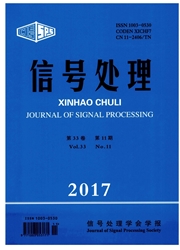

 中文摘要:
中文摘要:
均衡技术是一种对抗信道衰落、提高无线电通信质量的有效手段。在可见光通信中,由于传输媒介和实现方式与无线电通信存在差异,传统的均衡算法不一定适用。本文针对可见光信道的特点,总结现有最小均方误差(LMS)均衡算法,提出了一种适用于可见光通信的变步长LMS算法。该算法中,步长公式采用误差函数替代Sigmoid函数和箕舌线函数;此外,为了降低计算复杂度和硬件实现难度,它利用初等函数分段近似替代误差函数。仿真结果表明,在可见光信道条件下,改进后的算法与现有的几种算法相比,可以保证在较低的稳态误差下有更快的收敛速度,且具有较好的跟踪性,因而更适用于可见光通信系统。
 英文摘要:
英文摘要:
Equalization is an effective technique to overcome the multipath fading and improve the performance of radio communications. In visible light communication (VLC), since the propagation medium and the realization approach are different from that of radio communications, conventional equalization algorithms may not be applicable any longer. This paper analyzes the characteristics of visible light channel, summarizes the existing least mean square (LMS) equalization algorithms, and then proposes an improved variable step-size LMS algorithm for VLC. In the proposed algorithm, step-size is adjusted based on the error function instead of the Sigmoid function and Versiera function. Moreover, in order to reduce the complexity and the difficulty of hardware implementation, the error function is approximated by a piecewise elementary function. Simulation results show that, under visible light channel, the proposed algorithm can get faster convergence speed and better tracking performance with low steady-state errors compared with existing algorithms, and thereby are more suit- able for VLC systems.
 同期刊论文项目
同期刊论文项目
 同项目期刊论文
同项目期刊论文
 期刊信息
期刊信息
